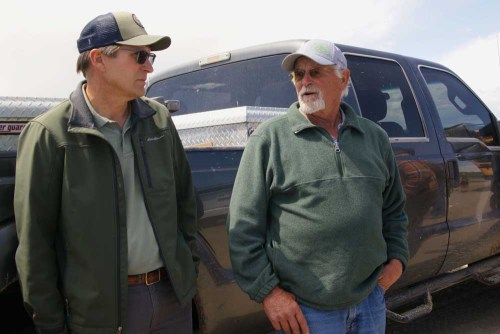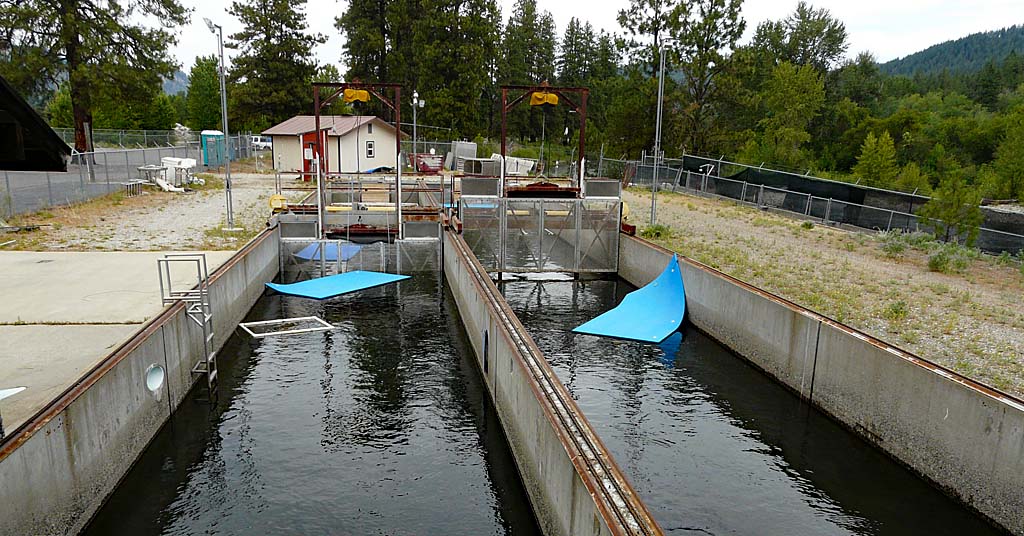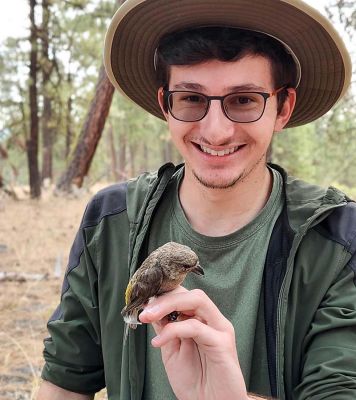108-year-old Idaho irrigation system getting update
Published 7:15 am Monday, June 26, 2023

- Larry Meyer, right, a Twin Falls Conservation District supervisor, talks with Dave Bjorneberg, supervisory agricultural engineer with USDA Agricultural Service, during a tour of the Clover Tact on June 20, 2023.
BUHL, Idaho — Irrigators on the Clover Tract of the Twin Falls Canal Co. will have a 21st century irrigation system when a $6 million project is completed.
The project will convert the old open-canal gravity system to an enclosed, pressurized underground pipeline system for the Clover Tract’s 4,000 irrigated acres, saving water and energy and reducing sediment flows.
Trending
“By doing it, we’re going to save about 4,000 acre-feet a year … from ditch loss, evaporation and spill water,” said Larry Meyer, a Twin Falls Soil and Water Conservation District supervisor and a third-generation farmer on the Clover Tract.
The project also will bring a power savings of about 25%, he said.
The Clover community — and its irrigation system — got its start in 1915 when investor Harley J. Hooker looked at developing the ground west of Twin Falls. It was all done under the Carey Act, which offered arid federal lands to states as long as they arranged through private companies to have the land irrigated.
Hooker’s development brought settlers from German Lutheran communities in southern Nebraska and northern Kansas, Meyer said.
The aging system has its share of issues including an old leaky mainline that was fortified with cement in 1984. But the pipe is going bad, with the cement deteriorating. A 6-foot section of the mainline broke in the spring of 2021.
Irrigators on the tract pay for shares from the Twin Falls Canal Co. taking water out of the High Line Canal. The nonprofit Clover Irrigation Pump Co. — founded around 2015 — pumps the water up from the High Line, puts it into laterals and distributes it to irrigators by gravity.
Trending
The mainline and four old pumping stations will be replaced with smaller pumping stations and smaller pipes. The new pumps will be variable frequency drive, which works on demand.
Two new pumps stations were installed this spring in the first phase of the project. Two more, and hopefully three, will be installed in later phases, Meyer said.
Modernizing the 108-year-old system has been on the Twin Falls Soil and Water Conservation District’s agenda for at least 10 years, he said.
“The driving force is our pipeline is probably 80 years old,” he said.
That deteriorating pipeline replaced the original wooden pipeline.
The project to modernize the irrigation system is underway thanks to a $3 million Water Smart grant from the Natural Resources Conservation Service and a $300,000 grant from the state Water Quality Program for Agriculture.
The Twin Falls District hopes the grants will cover 50% to 60% of total project cost, he said.
NRCS is providing engineering expertise, the Twin Falls Canal Co. has assisted in the project and The Twin Falls District and Clover Irrigation Pump Co. have been working with Idaho Power to get the needed power infrastructure for a pressurized system.
Local contractors Lancaster Trenching is doing the excavation work for the pipelines, and Sliman and Butler Irrigation Service in Buhl is installing the pipe.
Harley J. Hooker, a native of Illinois, came to Idaho in 1912 and colonized the Clover Tract above the High Line Canal in 1915 and 1916. The tract was developed by High Line Seed Farms Co., of which Hooker was a member.
The developers removed the brush, planed the land, leveled it and seeded it all to white clover. They also built roads, ditches, headgates, laterals, telephone lines and 65 miles of woven wire fence, guaranteeing settlers a first-class stand of clover.
The land sold for $160 per acre to more than 69 settlers from Nebraska.
Source: History of Idaho: The Gem of the Mountains Volume 2 by James Henry Hawley.
High Line Seed Farms put about 4,000 acres under irrigation by means of a pumping plant. These farms were sold to people in Nebraska, Kansas and a few other states. The whole tract was seeded, and the first crop was guaranteed to the purchaser even before he moved onto the property.
The company also donated 6 acres to the Trinity Lutheran congregation. A school, which also served as a house of worship, was built on that land in 1915. A church was built there in 1918.
Source: Clover Trinity Lutheran Church









